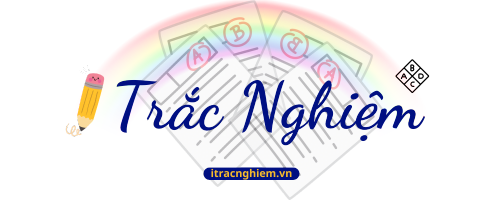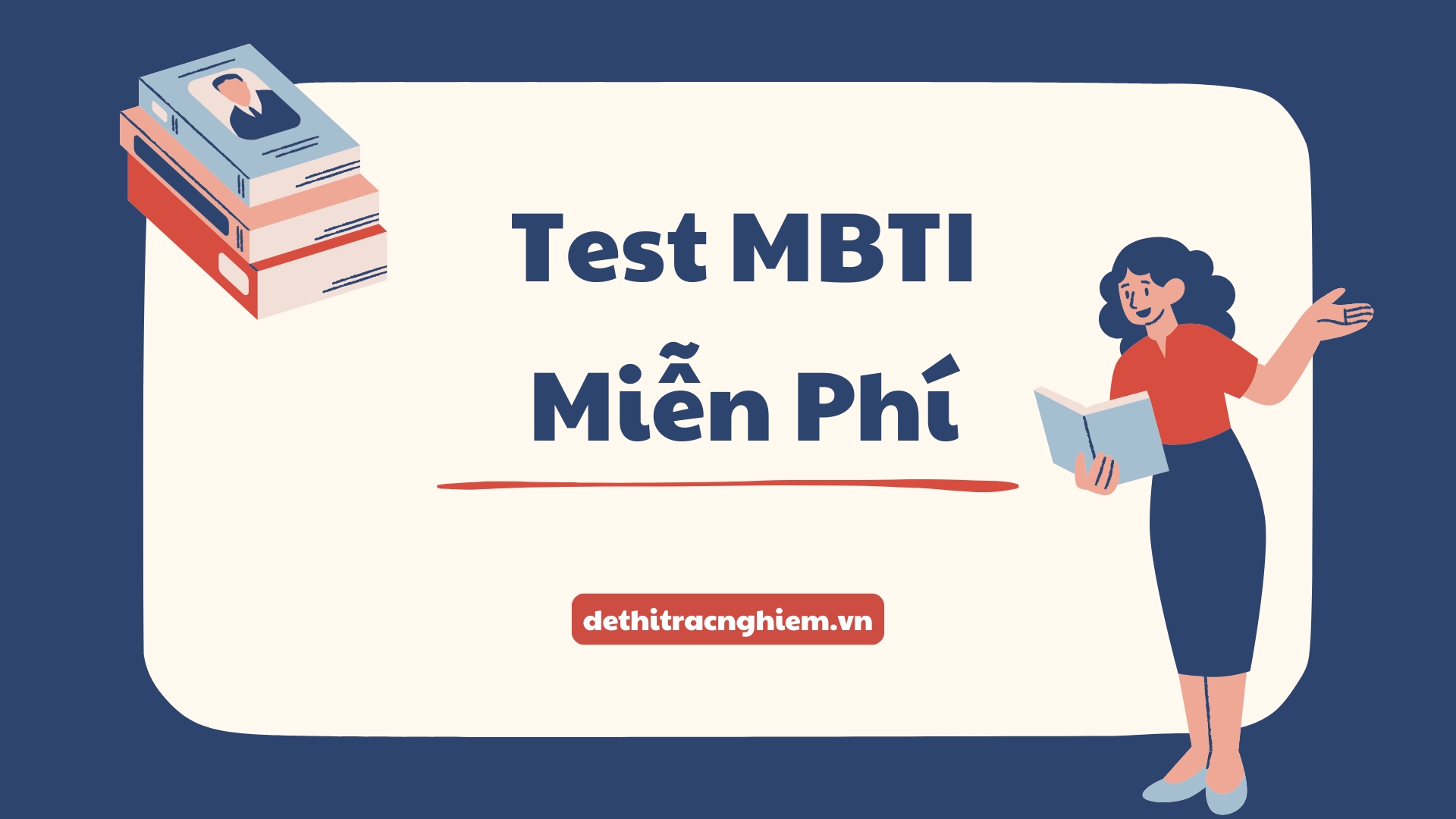Đề thi thử Đại học 2025 môn Tiếng Anh – THPT Thuận Thành 1 là một trong những đề tiêu biểu thuộc Tổng hợp đề thi thử môn Tiếng Anh THPT QG, nằm trong chương trình Đề thi vào Đại học. Đây là đề thi thử được tổ chức bởi Trường THPT Thuận Thành 1 – tỉnh Bắc Ninh, nhằm giúp học sinh lớp 12 luyện tập toàn diện và làm quen với cấu trúc chuẩn của kỳ thi Tốt nghiệp THPT Quốc gia năm 2025.
Đề thi được biên soạn bám sát đề minh họa mới nhất của Bộ Giáo dục và Đào tạo, gồm các phần trọng tâm: ngữ âm (phát âm – trọng âm), ngữ pháp – từ vựng, chức năng giao tiếp, tìm lỗi sai, viết lại câu, và đọc hiểu. Hệ thống câu hỏi được sắp xếp từ dễ đến khó, phù hợp với nhiều đối tượng học sinh, giúp các em nâng cao kỹ năng làm bài trắc nghiệm nhanh – chính xác và quản lý thời gian hiệu quả trong phòng thi.
Hãy cùng Dethitracnghiem.vn khám phá đề thi thử của Trường THPT Thuận Thành 1 và bắt đầu luyện tập để tự tin bước vào kỳ thi Tốt nghiệp THPT 2025 với kết quả như mong đợi!
- Số trang: 4 trang
- Hình thức: Trắc nghiệm
- Thời gian làm bài: 50 phút (không kể thời gian phát đề)
ĐỀ THI THỬ ĐẠI HỌC MÔN TIẾNG ANH NĂM 2025 THPT THUẬN THÀNH 1
Read the following advertisement/ announcement and mark the letter A, B, C, or D on your answer sheet to indicate the correct option that best fits each of the numbered blanks from 1 to 6.
Safety tips during a flood
Move immediately to higher ground or stay on high ground.
Continue to check the media for emergency information.
Follow instructions from public safety officials. (1) ______ to evacuate, do so immediately.
If you must (2) ______ your home, take only essential items and bring your pets if safe to do so.
If told to shelter in place, listen to local television or radio for updates. (3) ______ conditions change quickly, be prepared to evacuate to a shelter or a neighbor’s home if necessary.
Question 1:
A. If advised
B. Advised
C. To advise
D. Advising
Question 2:
A. adopt
B. adapt
C. evacuate
D. abandon
Question 3:
A. Could
B. Should
C. Can
D. May
Learn a rare language today!
Cherokee is a language spoken by about 22, 000 people today. Most of them live in Oklahoma and North Carolina in the USA. The (4) ______ name for Cherokee is Tsalagi.
Learn (5) ______ language today by signing up for our course, which includes a textbook and access (6) ______ video and video material online, for only $90.
For further information and costs, please write to:
Adam Williams at a_williams@tsalagi.com
Question 4:
A. officer
B. official
C. office
D. officially
Question 5:
A. a
B. ø (no article)
C. an
D. the
Question 6:
A. to
B. on
C. with
D. without
Mark the letter A, B, C, or D on your answer sheet to indicate the correct arrangement of the sentences to make a meaningful paragraph/letter in each of the following questions.
Question 7:
a. Firstly, friends provide a support system, offering comfort and encouragement during both joyous and challenging times.
b. Thirdly, shared laughter and camaraderie create cherished memories that last a lifetime.
c. Lastly, true friends stand by us through thick and thin, embodying the essence of loyalty and companionship that makes life truly meaningful.
d. Additionally, friends offer a sense of belonging and acceptance, making life’s journey more enjoyable.
e. Friendship is a precious bond that enriches our lives in countless ways.
f. Secondly, they bring a unique blend of perspectives and experiences that broaden our horizons and help us grow as individuals.
A. e-a-b-f-d-c
B. e-a-f-b-d-c
C. e-a-b-d-f-c
D. c-a-b-f-d-e
Question 8:
a. I’m having the time of my life exploring this beautiful destination: the most amazing beaches with crystal-clear waters and golden sands, with fresh seafood and exotic spices tantalizing my taste buds!
b. Can’t wait to catch up and share all my holiday adventures with you! See you soon!
c. Hey Tony from Vietnam! (By the time you read this though, I’ll probably have arrived in Thailand.)
d. Anyway, I’ll save the rest of the details for when I see you next.
e. Plus, I’ve met some fascinating people along the way, each with their own unique stories to share.
A. c-b-a-e-d
B. c-a-d-e-b
C. c-a-e-d-b
D. c-b-e-a-d
Mark the letter A, B, C, or D on your answer sheet to indicate the word whose underlined part differs from that of the other three in pronunciation in each of the following questions.
Question 9:
A. attach
B. stomach
C. challenge
D. children
Question 10:
A. nag
B. mgle
C. sgme
D. make
Mark the letter A, B, C, or D on your answer sheet to indicate the word that differs from the other three in the position of stress in each of the following questions.
Question 11:
A. popular
B. classify
C. develop
D. difficult
Question 12:
A. hotel
B. canteen
C. cartoon
D. retail
Mark the letter A, B, C, or D on your answer sheet to indicate the correct answer to each of the following questions.
Question 13: You are willing to help your parents with the household chores, ______?
A. don’t you
B. aren’t you
C. didn’t you
D. won’t you
Question 14: We ______ there for ten minutes when the police arrived.
A. were being
B. had been
C. were
D. have been
Question 15: He came ______ a large sum of money when his aunt died.
A. off
B. in
C. on
D. into
Question 16: The economic conditions today are ______ they were in the past.
A. the best than
B. much better
C. much better than
D. much more good
Question 17: Now that he is retired, Harry spends most of his time ______ in the garden.
A. to be working
B. to work
C. working
D. is working
Read the following passage and mark the letter A, B, C or D on your answer sheet to indicate the correct answer to each of the questions from 18 to 24.
Urbanisation occurs in many parts of the world, both in developed and developing nations. It refers to the process in which urban areas grow as people leave the countryside or more factories and towns are built in rural areas. This can lead to the concentration of populations into towns and cities. When properly planned urbanisation can bring a number of benefits, especially for the economy and society. However, if it is poorly managed, it can pose a significant challenge to maintaining the sustainability of these areas.
Big cities attract a lot of people as they usually offer more employment opportunities as well as a better life. The economy of urban areas tends to grow rapidly as more businesses and factories are created, and more workers are needed. Economic growth also leads to an increase in household income and spending. This also encourages governments to spend money on better schools, hospitals, roads, public transport, and more. As cities expand, many more facilities such as public parks and gardens, swimming pools, libraries, cinemas, and sports centres are built. These are just some of the spaces that make city life exciting and appealing to people of all ages.
However, when too many people move to a big city, without good planning and investment, its infrastructure can become ineffective. For example, big urban areas can easily get overcrowded as railway networks and roads can’t cope with the large number of passengers. The economic growth and expansion of big cities come at a big price for local residents as house prices and rents go up, and they can’t afford to either buy or rent.
Another problem is that big cities are experiencing more air pollution than rural areas. This can increase the risk of infections, heart disease, and lung cancer, and severely affect people who are ill. Urbanisation is a process that cannot be stopped and the best way to minimise the problems caused by it is to plan for the growth and all the resources needed, and make sure the infrastructure can support the increasing population.
Question 18: Which of the following is the best title for the passage?
A. Positive and negative effects of urbanisation
B. The rapid speed of urbanisation
C. Urbanisation history.
D. Causes of urbanisation
Question 19: According to the passage, which problems does urbanisation lead to?
A. high living standards and poor housing
B. congestion, high rents, and pollution
C. fewer resources and good infrastructure
D. economics growth and increasing facilities
Question 20: According to paragraph 2, which of the following is NOT a reason why people move to big cities?
A. More job opportunities.
B. Higher earnings.
C. A wide range of modern services.
D. Government spending.
Question 21: The word ‘appealing’ in paragraph 2 is OPPOSITE in meaning to ______.
A. exciting
B. unimportant
C. demanding
D. unattractive
Question 22: The phrase ‘come at a big price’ in paragraph 3 mostly means ______.
A. make big cities expensive
B. have an unpleasant consequence
C. give local residents a lot of money
D. have something positive as a result
Question 23: The word ‘they’ in paragraph 3 refers to ______.
A. local residents
B. passengers
C. big cities
D. house prices
Question 24: Which of the following can be inferred from the passage?
A. Good urban planning is needed to manage rapid urbanisation.
B. Economic growth can help minimise the problems of urbanisation.
C. Governments need to modernise city facilities.
D. Urbanisation only affects rural areas.
Mark the letter A, B, C, or D on your answer sheet to indicate the correct option that best fits each of the numbered blanks from 25 to 30.
The proverb “When in Rome, do what Romans do” summarises (25) ______ adapting to the customs and norms of a new environment. It emphasises the importance of respecting local traditions and practices (26) ______. By embracing the local way of life, you can better integrate into the community (27) ______ with its people. This principle encourages openness to new experiences and a willingness to step outside (28) ______. Ultimately, following this proverb allows individuals to navigate unfamiliar territory with grace and respect, fostering mutual appreciation and harmony (29) ______ and (30) ______.
Question 25:
A. the idea of
B. an idea on
C. the idea on
D. an idea of
Question 26:
A. how you visit and live in a different culture
B. where you visit or live in a different culture
C. when you visit or live in a different culture
D. what you visit or live in a different culture
Question 27:
A. or forge meaningful connections
B. but forge meaningful connections
C. and forge meaningful connections
D. so forge meaningful connections
Question 28:
A. our comfort zone
B. understanding culture
C. their comfort zone
D. your comfort zone
Question 29:
A. understanding cross-cultural
B. culture understanding
C. cross-cultural understanding
D. understanding culture
Question 30:
A. within different cultures
B. between different cultures
C. along with different cultures
D. on different cultures
Mark the letter A, B, C, or D on your answer sheet to indicate the correct option that best fits each of the numbered blanks from 31 to 35.
Adult friendships often stay strong with small (31) ______, called “friendship snacks.” These are short messages or shared things like memes that help keep the connection alive even when people are busy. These small actions don’t replace deep bonding, (32) ______ they help keep the friendship going until friends can meet or talk more substantially. Natalie Pennington, who is an expert in communication, says that these short messages can be as healthy and beneficial as fruits and vegetables. While some people spend many hours together to solidify a friendship, (33) ______ give quick exchanges to deepen bonds. Phone calls or voice memos can enhance this effect, as hearing a friend’s voice can evoke humour and shared memories. Additionally, some people embrace the joy in making a friend laugh. Routine check-ins, whether through texts, emails, or calls, are part of what psychologists call “mundane maintenance,” (34) ______ is essential for long-term relationships. Small gestures (35) ______ care and can boost the feeling of connection, with each friendship having its unique rhythm of interaction. In today’s world, where direct contact is less frequent, these “friendship snacks” are vital for sustaining relationships.
Question 31:
A. promises
B. replacements
C. interactions
D. personalities
Question 32:
A. but
B. so
C. or
D. and
Question 33:
A. another
B. others
C. other
D. the others
Question 34:
A. why
B. where
C. which
D. who
Question 35:
A. signal
B. take
C. cause
D. count
Read the following passage and mark the letter A, B, C or D on your answer sheet to indicate the correct answer to each of the questions from 36 to 40.
Mickey Mouse is one of the most popular cartoon characters in the world. Mickey was invented in 1928 by Walt Disney. His first public cartoon was called Steamboat Willie, which was seen by many audiences. Originally, Walt Disney himself did Mickey Mouse’s vocal expressions such as whistling, laughing, or crying. Mickey did not actually speak until 1929. Interestingly enough, Mickey’s first words were “Hot Dogs! Hot Dogs!”.
When Walt Disney began producing Mickey cartoons, there were hardly any animations in theaters. One of the reasons why Disney was much more successful than other animators was because of his use of sound. Most animation companies were creating silent animations. Walt Disney created a sound track to match the scenes in the cartoons, and this became very popular. Audiences began to see how much could be conveyed by a sound track.
Throughout his existence, Mickey has undergone a few changes. For example, he didn’t always have white gloves. His black hands were difficult to see against his black body, so animators dressed Mickey in white gloves. In 1940, Mickey was given pupils in his eyes. Later, he could lose his trademark red pants and start wearing different clothes. Today, Mickey Mouse is an icon for the Walt Disney Company and is known all over the world.
Question 36: What would be the best title for the passage?
A. The trademark of Mickey Mouse
B. Mickey Mouse’s first words
C. Mickey Mouse’s life and history
D. Walt Disney’s animations
Question 37: The word ‘conveyed’ in paragraph 2 is closest in meaning to ______?
A. mimicked
B. touched
C. loved
D. carried
Question 38: According to paragraph 2, what did Walt Disney put in his Mickey Cartoons?
A. Words and voices
B. audiences
C. a sound track
D. white gloves
Question 39: The word ‘his’ in paragraph 3 refers to ______?
A. Hot Dog
B. Mickey Mouse
C. Steamboat Willie
D. Walt Disney
Question 40: Which of the following is NOT mentioned as a change to Mickey’s appearance through his life?
A. pants
B. gloves
C. language
D. pupils
Mục đích tổ chức kỳ thi Đại học năm 2025 là gì?
Căn cứ theo quy chế hiện hành của Bộ Giáo dục và Đào tạo và các văn bản hướng dẫn tổ chức kỳ thi Đại học năm 2025, mục đích của kỳ thi là:
– Đánh giá kết quả học tập của học sinh sau 12 năm học theo yêu cầu của chương trình giáo dục phổ thông.
– Lấy kết quả thi để xét công nhận tốt nghiệp trung học phổ thông và làm căn cứ tuyển sinh đại học, cao đẳng.
– Góp phần đánh giá chất lượng giáo dục của địa phương và cả nước, làm cơ sở điều chỉnh nội dung, phương pháp dạy học trong nhà trường.
Thí sinh thi Đại học năm 2025 có bắt buộc thi môn Tiếng Anh không?
Theo quy định hiện hành của Bộ Giáo dục và Đào tạo và hướng dẫn tổ chức kỳ thi tốt nghiệp Đại học năm 2025, thí sinh dự thi phải thực hiện như sau:
– Thi 3 môn bắt buộc: Toán, Ngữ văn và Ngoại ngữ.
– Ngoài ra, thí sinh phải chọn một trong hai bài thi tổ hợp: Khoa học Tự nhiên (gồm các môn Vật lí, Hóa học, Sinh học) hoặc Khoa học Xã hội (gồm các môn Lịch sử, Địa lí, Giáo dục công dân – dành cho học sinh học chương trình giáo dục phổ thông).
Trong số các môn thi, Tiếng Anh là một trong ba môn thuộc bài thi Ngoại ngữ bắt buộc, thí sinh phải thi môn Tiếng Anh như một môn bắt buộc, không phụ thuộc vào lựa chọn bài thi tổ hợp hay mục đích xét tuyển đại học.
Như vậy, kỳ thi Đại học năm 2025 bắt buộc thí sinh phải thi môn Tiếng Anh.




